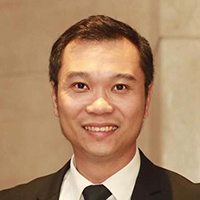Four Easy Steps For Effective Investing

INVESTING is both a science and an art. Science for all its principles of economics, asset allocation, portfolio management and whatnots, art for the stroke of creativity needed in putting together a mish-mash of financial products to suit an individual’s needs. Simple in concept yet complex in details.
Doing so without any framework is like being a headless chicken. Worse is not doing anything, leaving you a sitting duck for inflation and expenses that would have been otherwise averted. Indeed, a large majority just do it out of expediency, curiosity or novelty, if at all.
To remedy that, here are the four simple and easy steps that anyone can use:
Step 1: Assess. As Lao Tzu said, “The journey of a thousand miles begins with one step.” In our case, the journey to a million pesos begins with an asessment.
Often is the case where an investment is undertaken without the proper context, goals and objectives and realities in mind. The very first step in any investment exercise is assessing your financial goals, investment objective and present situation: what you really want in life and where you are right now.
If you want to build a retirement nest egg, for instance, determine the level of lifestyle, number of years in retirement (best to estimate, not to commit, for you may overshoot it) and expenditure you would want to live on.
Take to mind that generally speaking, expenses will rise due to inflation and some items will need increasing allocations (like medical-related items, recreation) and some less (like food and clothing). Next, determine how near or far to that goal you are in now. Have you funds and resources or are these still lacking? If lacking, how much is still needed? This can be also done not just for retirement but also for other financial goals such as the children’s education, a vacation, or a home downpayment.
With Step 1, you identify your goals, where you are right now and the gap that needs to be filled.
Step 2: Design. Once the gap has been identified, it is time to design the investment strategy to achieve your goals. In this step, you check your cash flow and then determine how much you can set aside for your investments. A tip: You may have to cut off some expenses in order to reallocate to investing.
Let me stress that at this point it is very crucial to have a professional at hand, one who can sit down and guide you in the process of reallocating resources, who is familiar with investment vehicles and who knows what can suit you the best. Just as you do not take medicine for serious health concerns without a checkup or prescription, so too with investments — it is best to seek professional advice. I cannot overemphasize the importance of this: what is at stake is your and your family’s financial future.
By and large, the basic menu for an investment portfolio includes time deposits, mutual funds, UITFs, stocks, bonds and a host of other instruments that can serve you well. The key is to know which and what mix can bring you to your goals. As Robert Kiyosaki wrote, investment vehicles are called “vehicles” because they take you to where you want to be.
Step 3: Do. This step is one of the most “not done” by Filipinos. They don’t get into the act of investing. Sure, you have your goals and may have decided to invest but for some — if not the majority – don’t actually do so.
After doing the tedious assessing and designing of your portfolio, it is imperative that you actually implement the investment plan. It’s time to get down and dirty and hit the ground running. Go to a bank, mutual fund company, stockbroker, or government securities dealer and open your investment account. Your professional financial planner or adviser may have recommended a few, saving you the time and hassle of doing the research yourself.
Step 4: Review. Investing is not a one-time, big-time thing. It is a process that involves regular review. This part is often neglected, sad to say. Reviewing your portfolio periodically—at least annually—enables you to reassess if your plan is still on track. Think of it as like checking your car’s tires, gas, oil and battery: if they still serve you well, drive on; if not, it’s time to change them.
Periodic review also takes into account assumptions, projections and any changes that might affect your investment returns. An increase in the average inflation rate may require changing your portfolio to include higher-yielding assets. Also, a change in lifestyle or even life goals can affect the structure and content of your basket of investments.
With these four easy and simple steps — assess, design, do and review, I hope that you will be on your way to investing success.
****
 Rienzie P. Biolena is a registered financial planner of RFP Philippines. He is president and chief financial planner of WealthArki and Consultancy, a financial planning firm. Learn more about personal financial planning at the 68th RFP program this March 2018. To inquire, e-mail info@rfp.ph or text <name><e-mail><RFP> to 0917-9689774.
Rienzie P. Biolena is a registered financial planner of RFP Philippines. He is president and chief financial planner of WealthArki and Consultancy, a financial planning firm. Learn more about personal financial planning at the 68th RFP program this March 2018. To inquire, e-mail info@rfp.ph or text <name><e-mail><RFP> to 0917-9689774.
Source: http://www.manilatimes.net/four-easy-steps-for-effective-investing/385090/
2,057 total views, 1 views today












Social